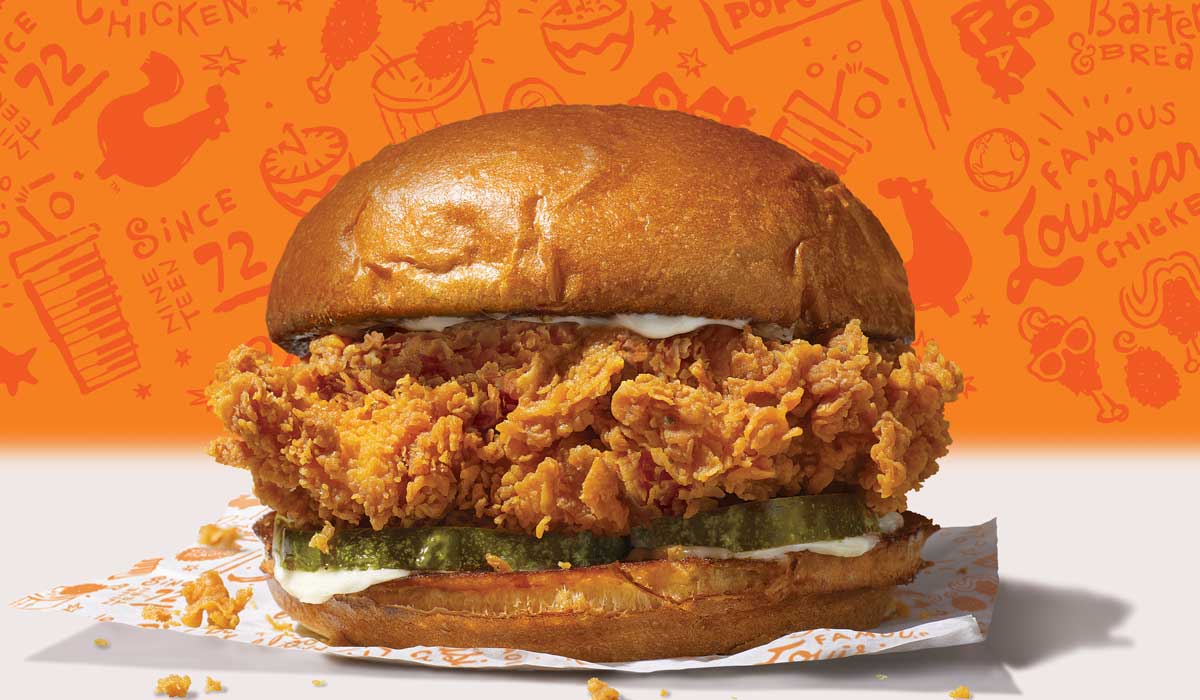Popeyes’ Chicken Sandwich and Burger King’s Impossible Whopper were both huge menu introductions in their own right. Their respective launches were met with fan adoration and critical acclaim, and gave their brands needed jolts of media buzz.
But sales results from Restaurant Brands International’s (RBI) third quarter show that the two products didn’t just give their brands lifts for the short-term. Rather, they provided massive new platforms to expand RBI’s reach.
RBI—parent to Burger King, Popeyes Louisiana Kitchen, and Tim Hortons—reported Monday that its consolidated system-wide sales grew 8.9 percent on the backs of Burger King’s 10.7 percent and Popeyes’ 15.6 percent increases. Burger King’s U.S. same-store sales were up 5 percent, which was its strongest showing since 2015, according to the company. Popeyes, meanwhile, reported one of its best quarters for U.S. same-store sales in two decades, with a 10.2 percent increase. Tim Hortons’ global comparable sales were down 1.4 percent.
Globally, RBI’s net restaurant count grew 5 percent, with the company now claiming 26,311 restaurants around the world.
Those huge sales numbers for Popeyes and Burger King should be no surprise to anyone following the former’s Chicken Sandwich mania and the latter’s buzzy rollout of its Impossible Whopper. RBI CEO Jose Cil said during a call reporting the company’s earnings that the products far exceeded expectations.
Most importantly? The two menu items are clearly not one-time curiosity purchases from existing customers. Rather, they’re building their brands’ incremental business through new and lapsed customers.
Let’s start with Popeyes’ Chicken Sandwich. By now the product’s success has been well-told. A social media battle with chief competitor Chick-fil-A sparked a consumer phenomenon that saw Popeyes’ sandwich sell out two weeks after its August 12 rollout, even though the brand had planned for it to last a couple months. Apex Marketing Group estimated that Popeyes reaped $23 million in equivalent media value from the sandwich’s first 11 days in stores, and $65 million total. And mobile location analytics platform Placer.ai found that on August 20 and August 21—just over a week after the Chicken Sandwich’s debut—traffic to Popeyes branches nationwide rose 67.6 and 103.3 percent, respectively, above the company’s summer baseline.
Cil said during Monday’s earnings call that trial is a key obstacle to purchase intent for Popeyes, but that research shows that customers who try the brand’s food love it and come back for more. The Chicken Sandwich proved enormously strong at driving trial from customers, “many of whom had never experienced the brand or its Cajun-influence menu before,” he said.
Perhaps that’s why the Q3 business boom wasn’t just for the Chicken Sandwich. Cil said the company saw a lift in business for bone-in chicken, tenders, beverages, and even desserts. Indeed, the Chicken Sandwich proved to be a rising tide for Popeyes, not just a tsunami.
Cil added that Popeyes enjoyed better frequency from both existing brand fans and new customers interested in checking out the Chicken Sandwich. These facts could be critical to Popeyes’ growth moving forward—growth that Cil believes still has plenty of runway left.
“We believe we’re significantly under-penetrated in the U.S. relative to our potential, and with great brand image and fantastic products, we’re confident we have the space to drive significant growth for a long time to come,” he said. “One of the things that’s most important about Popeyes is that … about 65 percent of the U.S. hasn’t tried Popeyes, and we know when guests try the product … it’s preferred over any other chicken [quick serve], or most of the chicken [quick-serve] players in the market.”
Popeyes announced that the Chicken Sandwich would return to menus November 3. The company prepared for the return by bolstering its supply chain, as well as its hiring efforts. Notably, the Chicken Sandwich’s return is slated for a Sunday—a shot across the bow of Chick-fil-A, which is closed Sundays. (Watch the company’s teaser for the return below.)
Meanwhile, Burger King is enjoying a similar boost from the Impossible Whopper that could pay dividends for the long-term. Cil said the especially exciting aspect of the new product—which includes a plant-based patty from Impossible Foods and launched nationwide August 8—is that sales have been “highly incremental and have attracted new types of guests into our restaurants.”
“We see a lot of millennial and Gen Z customers who tend to really connect with the message around sustainability,” he said. He added anecdotally that he interacted with a woman in her mid-40s at a Burger King in Los Angeles who ordered two Impossible Whoppers. “I started a conversation with her, and she said she hadn’t come to Burger King for over a decade, but came back because the product really resonated with her and tasted great.”
The Impossible Whopper is by far the biggest commitment to a plant-based meat alternative in the quick-service industry to date. While McDonald’s is testing a plant-based P.L.T. (plant, lettuce, tomato) partnership with Beyond Meat in Canada, and others—White Castle, Del Taco, Hardee’s, and Carl’s Jr., to name a few—have established permanent plant offerings in their own right, none has the scale and exposure—not to mention name recognition—as Burger King and its Whopper platform.











